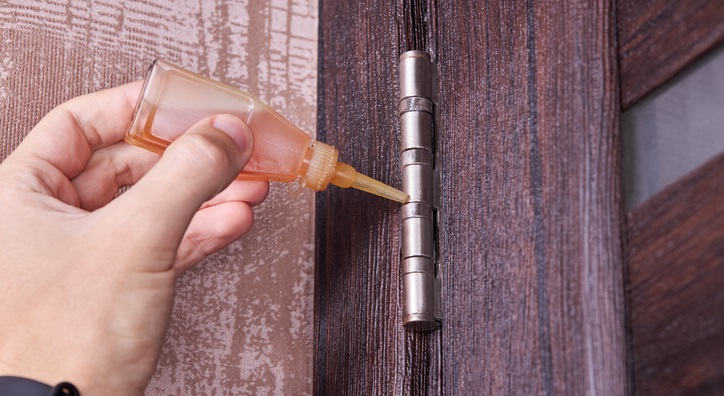How to Fix Door Problems
Reading time: 6 minutes
Fixing doors: what to do first
If you’ve got an ongoing problem with a door, it’s tempting to jump straight in and sort it out. However, it’s worth checking a couple of things before starting any door fixes:
-
Is the property rented? Any repairs or maintenance are likely to be covered by the landlord or property management company, and repairs undertaken yourself may invalidate your rental agreement. They may also have preferred contractors that they wish to use so make sure to check your agreement or speak to the landlord/agency first.
-
Are the doors new? If you’ve had newly fitted doors, it’s possible they can be fixed under warranty. Any recent rebuilds, such as door frames, or anything that may directly impact the doors themselves, may have some repair cover. If so, check any agreements first before starting any work.
What causes a door to stick?
There are several reasons why a door may stick. Over time, it’s perfectly normal for a door to sag a little. This can be down to the hinges loosening, causing the door to lean, so that it sticks against the door jamb (found on the opposite side of the doorframe to the hinges). A loose strike plate, which is the metal panel that goes across the door latch, can also cause the door to stick.
Alternatively, if you have a wooden door, the joints of the door itself can loosen. This doesn’t mean the door is falling apart, so don’t panic! It’s natural for some relaxing of joints over a long period of time. Another issue could be the time of year. Summer can bring high humidity, causing a door to expand, therefore making it stick in a door frame. Alternatively, a house may be settling, causing walls to shift slightly. This can affect how the door slides into the door frame.
How do you fix a sticking door?
The first thing to check is where the door is sticking. You might find there’s an odd edge or corner that is just a bit tighter in the doorframe than anywhere else. We’ll look at each of these points in turn:
- Door Sagging From The Hinges
- Door Sticking at The Door Jamb
What makes a door creak?
When it comes to a creaking or squeaky door, the culprit is often the hinges. Dust and dirt can build up over time, causing friction against the moving parts of the hinge. Another reason is that metal parts need lubrication, so if the hinge is too dry, this can also lead to very irritating noises.
How to stop a door from creaking
Firstly, using a cloth, give the hinges a good clean up, removing any traces of dirt. If the creaking persists, a lubricating oil should clear the problem. But if you find that the hinges have rusted, which can also be a cause of creaking, it’s time to replace them completely.

Why do doors open or close by themselves?
While it can sometimes be a little annoying to have a door open or close on its own, it’s one of those situations that’s often ignored. For doors that close by themselves, a doorstop comes in handy. If a door stays open, even when pushed closed, this can be a more pressing problem, especially in regards to privacy or insulation. Again, we have to look at the door hinges for this problem, as poorly installed or misaligned hinges are often the reason.
Keeping doors open or closed
Check the hinges are securely fitted by tightening any screws that may have come loose. It’s possible that the hinges may have been pulled from the doorframe. If this doesn’t help, you may need to re-fit the hinges in a new, more secure position. When a door doesn’t stay shut, it’s worth checking if the door latch is closing properly. Latch bolts can become stuck and require lubrication.
Why do doors rattle?
Rattling doors can be just as annoying as doors that creak. This is often down to there being too much room between the door stop of the door frame and the door itself, even the lightest breeze could cause the door to rattle.
Stopping doors from rattling
Fixing a rattling door is fairly simple, and can be remedied by an adjustment to the latch plate on the door’s edge that connects with the door jamb. You can do this by unscrewing the latch plate, which will reveal a small tab. Using a screwdriver, bend the tab slightly, then screw the strike plate back onto the door. Make adjustments as necessary to reduce rattling.
If this has been helpful in solving your door problems, come back again for more useful hints and tips for doors and other home improvements.
Disclaimer: The information contained on this page is intended as an overall introduction and is not intended as specific advice from a qualified professional. Travis Perkins aims to avoid, but accepts no liability, in the case that any information stated is out of date.




